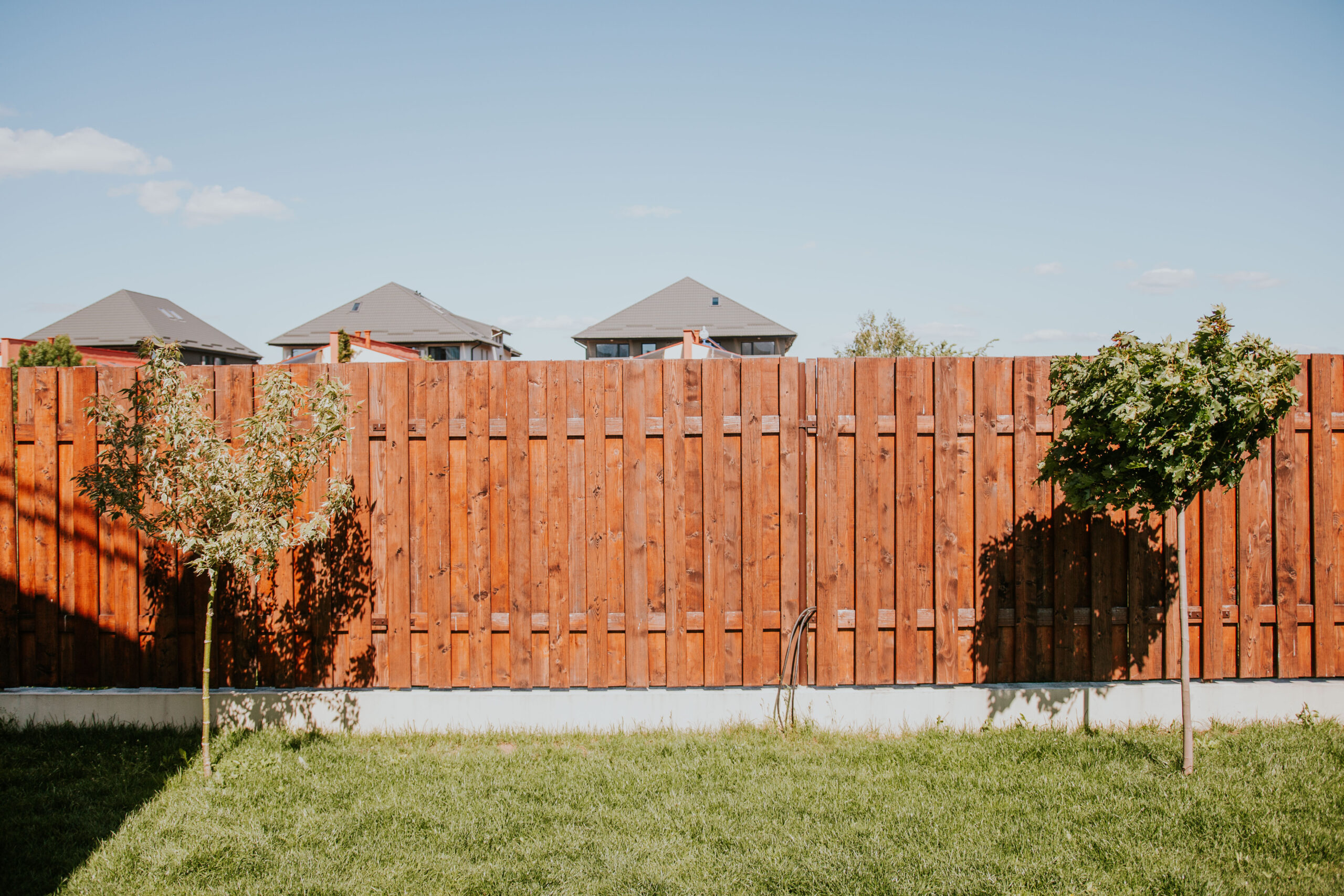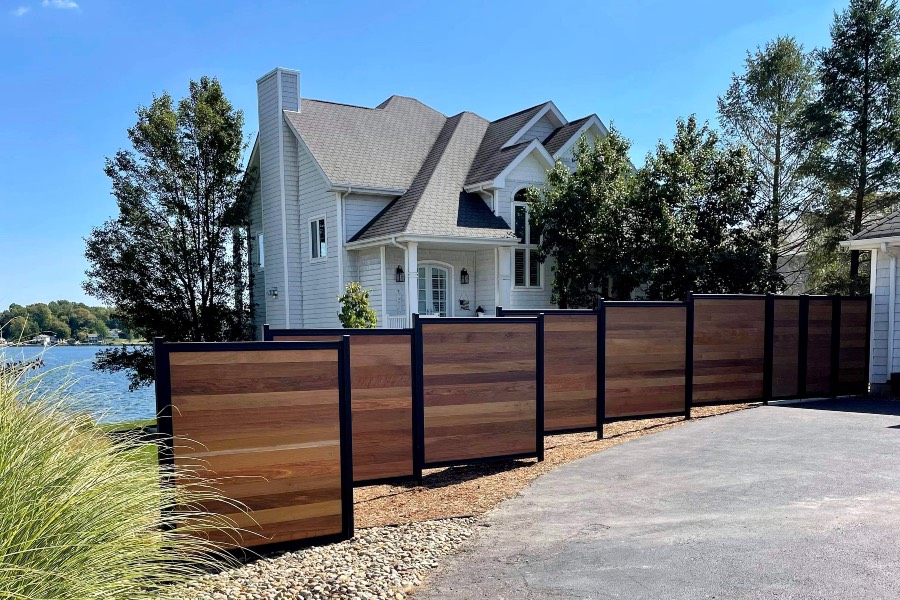All Categories
Featured
Various areas have differing policies, and understanding what's needed will certainly assist make certain that your fencing is lawful, secure, and built according to regional requirements. Right here's an overview to help you navigate the allowing procedure for fencing installation.
Why Are Permits Needed? Licenses are called for to ensure that the installment of your fence meets neighborhood building ordinance and zoning regulations. These policies are in location to preserve the security, appearance, and capability of homes in your neighborhood. Additionally, allows aid avoid disputes with neighbors pertaining to property lines, fence height, and other structural details.
Regional authorities require licenses to keep track of points like exposure at crossways, public security, and possible damage to utilities like pipes or electrical lines. The procedure helps keep your fencing job certified with safety and lawful standards.
Types of Licenses You May Need. The precise permits required can vary relying on your location and the specifics of your job. Below are the most usual kinds of authorizations you might require:
Building Permit. Many cities and areas need a structure license for fences that go beyond a certain height, typically over 6 feet. This permit ensures that your fence abides by structural criteria, specifically if it's made from particular materials such as concrete, metal, or block. Building authorizations are likewise necessary when your fencing impacts the general landscape, like creating an or blocking a sightline.
Zoning License. Zoning licenses are provided to make sure that your fence follows regional zoning legislations. These legislations might control where fencings can be put on your home (e.g., side, front, or yard), how high they can be, and whether they can be installed near roads or sidewalks. Zoning regulations are established to preserve the total aesthetic appeals of areas and preserve traffic safety.
Setback Authorization. Some areas have setback laws that figure out how much a fencing must be from the residential or commercial property line, roadway, or certain public rooms. Trouble permits are developed to ensure that your fence does not interfere with surrounding residential or commercial properties or public locations. A building study may be required to validate property lines prior to obtaining this kind of permit.
HOA Approval. You might require to obtain authorization from the HOA before installing a fencing if you live in a neighborhood governed by a Homeowners Organization (HOA) HOAs usually have strict standards concerning the kind of fencing allowed in the neighborhood, including its elevation, color, and material. Always talk to the HOA prior to starting your job to prevent any type of problems.
How to Obtain a Fence License. The process for acquiring an authorization typically involves a number of actions:
Research Study Citizen Rules. Begin by examining your city or region's web site to learn the particular needs for fence setup. You may need to go to the neighborhood preparation or structure division in person for more thorough info.
Prepare Your Application. Many cities will call for an application, that includes details regarding your intended fence, such as:
![]()
The kind of fencing product (wood, vinyl, chain-link, and so on) The intended elevation of the fencing. The location and measurements of the fence. A residential property study (to confirm residential or commercial property lines) Send the Application. After completing the application, submit it to the regional building or zoning workplace. You may be required to pay a cost relying on your area and the size of your fencing. Charges can vary, however they typically cover the expense of processing your demand and evaluating your strategies.
Wait On Authorization. When your application is sent, the local authorities will certainly review your plans to guarantee they meet zoning and building requirements. This process can take anywhere from a few days to numerous weeks, depending on the complexity of the task and the quantity of license demands in your location.
![]()
If Essential),Inspection (. In many cases, you might require to schedule an inspection after the fence is mounted to guarantee it meets the needed standards. Your local office will let you recognize if this action is essential.
When You Do Not Required an Authorization,. Not every fence installation calls for a license. Some circumstances where you may not need a license include:
Installing a fence that's under a certain height (commonly 3-4 feet for front yards) Changing an existing fence with one that is the exact same height and product. Setting up a short-term fencing (e.g., for construction or horticulture) Nevertheless, also if your project appears small, it's always advisable to contact local authorities to make certain you're adhering to the right procedure.
Effects of Not Getting an Authorization. Setting up a fencing without the necessary authorization can cause considerable consequences, including fines, elimination of the fencing, and expensive reinstallation. In many cases, regional authorities might require you to modify the fence if it doesn't fulfill code demands. In addition, not acquiring a permit can create disagreements with next-door neighbors, particularly if the fence is positioned incorrectly or breaks regional elevation laws.
Final thought. Before mounting a fencing, it is very important to look into the details permitting needs in your area. If an authorization is necessary and to make certain that you're complying with the appropriate procedure, call your neighborhood structure or zoning division to find out. By safeguarding the right permits, you'll stay clear of lawful problems and ensure that your fence installment is secure, certified, and easy.
Why Are Permits Needed? Licenses are called for to ensure that the installment of your fence meets neighborhood building ordinance and zoning regulations. These policies are in location to preserve the security, appearance, and capability of homes in your neighborhood. Additionally, allows aid avoid disputes with neighbors pertaining to property lines, fence height, and other structural details.
Regional authorities require licenses to keep track of points like exposure at crossways, public security, and possible damage to utilities like pipes or electrical lines. The procedure helps keep your fencing job certified with safety and lawful standards.
Types of Licenses You May Need. The precise permits required can vary relying on your location and the specifics of your job. Below are the most usual kinds of authorizations you might require:
Building Permit. Many cities and areas need a structure license for fences that go beyond a certain height, typically over 6 feet. This permit ensures that your fence abides by structural criteria, specifically if it's made from particular materials such as concrete, metal, or block. Building authorizations are likewise necessary when your fencing impacts the general landscape, like creating an or blocking a sightline.
Zoning License. Zoning licenses are provided to make sure that your fence follows regional zoning legislations. These legislations might control where fencings can be put on your home (e.g., side, front, or yard), how high they can be, and whether they can be installed near roads or sidewalks. Zoning regulations are established to preserve the total aesthetic appeals of areas and preserve traffic safety.
Setback Authorization. Some areas have setback laws that figure out how much a fencing must be from the residential or commercial property line, roadway, or certain public rooms. Trouble permits are developed to ensure that your fence does not interfere with surrounding residential or commercial properties or public locations. A building study may be required to validate property lines prior to obtaining this kind of permit.
HOA Approval. You might require to obtain authorization from the HOA before installing a fencing if you live in a neighborhood governed by a Homeowners Organization (HOA) HOAs usually have strict standards concerning the kind of fencing allowed in the neighborhood, including its elevation, color, and material. Always talk to the HOA prior to starting your job to prevent any type of problems.
How to Obtain a Fence License. The process for acquiring an authorization typically involves a number of actions:
Research Study Citizen Rules. Begin by examining your city or region's web site to learn the particular needs for fence setup. You may need to go to the neighborhood preparation or structure division in person for more thorough info.
Prepare Your Application. Many cities will call for an application, that includes details regarding your intended fence, such as:

The kind of fencing product (wood, vinyl, chain-link, and so on) The intended elevation of the fencing. The location and measurements of the fence. A residential property study (to confirm residential or commercial property lines) Send the Application. After completing the application, submit it to the regional building or zoning workplace. You may be required to pay a cost relying on your area and the size of your fencing. Charges can vary, however they typically cover the expense of processing your demand and evaluating your strategies.
Wait On Authorization. When your application is sent, the local authorities will certainly review your plans to guarantee they meet zoning and building requirements. This process can take anywhere from a few days to numerous weeks, depending on the complexity of the task and the quantity of license demands in your location.

If Essential),Inspection (. In many cases, you might require to schedule an inspection after the fence is mounted to guarantee it meets the needed standards. Your local office will let you recognize if this action is essential.
When You Do Not Required an Authorization,. Not every fence installation calls for a license. Some circumstances where you may not need a license include:
Installing a fence that's under a certain height (commonly 3-4 feet for front yards) Changing an existing fence with one that is the exact same height and product. Setting up a short-term fencing (e.g., for construction or horticulture) Nevertheless, also if your project appears small, it's always advisable to contact local authorities to make certain you're adhering to the right procedure.
Effects of Not Getting an Authorization. Setting up a fencing without the necessary authorization can cause considerable consequences, including fines, elimination of the fencing, and expensive reinstallation. In many cases, regional authorities might require you to modify the fence if it doesn't fulfill code demands. In addition, not acquiring a permit can create disagreements with next-door neighbors, particularly if the fence is positioned incorrectly or breaks regional elevation laws.
Final thought. Before mounting a fencing, it is very important to look into the details permitting needs in your area. If an authorization is necessary and to make certain that you're complying with the appropriate procedure, call your neighborhood structure or zoning division to find out. By safeguarding the right permits, you'll stay clear of lawful problems and ensure that your fence installment is secure, certified, and easy.
Latest Posts
Take Advantage of Special Auto Repair Offers in Chicago at Montclare Auto Repair
Published Jun 01, 25
1 min read
Seamless Aluminum Gutters: The Smart Option for Your Home
Published May 25, 25
1 min read
Learn Why Chicago Drivers Pick Montclare Auto Repair for Dependable Service and Huge Savings
Published May 23, 25
1 min read
More
Latest Posts
Take Advantage of Special Auto Repair Offers in Chicago at Montclare Auto Repair
Published Jun 01, 25
1 min read
Seamless Aluminum Gutters: The Smart Option for Your Home
Published May 25, 25
1 min read
Learn Why Chicago Drivers Pick Montclare Auto Repair for Dependable Service and Huge Savings
Published May 23, 25
1 min read